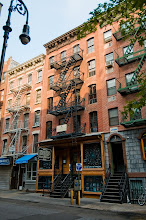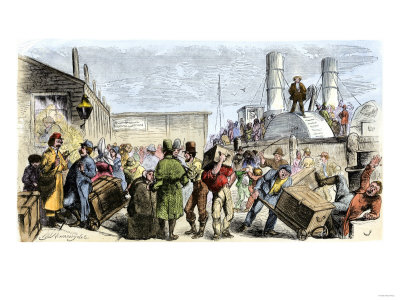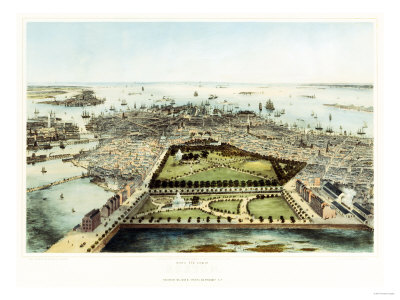Jul 12 2011
Posted by Hailie J under ADMIN ONLY - featured,Extra Credit Assignment
Experience of Immigrants in the Lower East Side
Tours of the Tenement Museum
Piecing It Together: Immigrants In the Garment Industry
When I started to study about New York history, I was very excited that I finally have a chance to know more about the city which I love deeply. However, when I read either  textbook or other resources that are related to the details, I had to deal with my lack of imagination. These difficulties and my curiosity dragged me to the Tenement Museum that is located in the lower east side Manhattan. Among 7 interesting tours, I chose one called ‘Piecing It Together’. There are two apartments that I visited for one and half hour tour. One is Levine family’s who lived there by late nineteenth century, and the other is Rogarshevskys’ who lived there by early twentieth century.
textbook or other resources that are related to the details, I had to deal with my lack of imagination. These difficulties and my curiosity dragged me to the Tenement Museum that is located in the lower east side Manhattan. Among 7 interesting tours, I chose one called ‘Piecing It Together’. There are two apartments that I visited for one and half hour tour. One is Levine family’s who lived there by late nineteenth century, and the other is Rogarshevskys’ who lived there by early twentieth century.
First of all, when the Lower East Side became the most densely populated area in 1860s and 1870s, people who are mostly European immigrants were squeezing small apartment. At this point, these are four or six story tenements that could possibly contain minimum 16-24 families. In other words, each building would contain over 150 people, and one block where these tenements occupied with would contain over 2,500 families.
1870s, people who are mostly European immigrants were squeezing small apartment. At this point, these are four or six story tenements that could possibly contain minimum 16-24 families. In other words, each building would contain over 150 people, and one block where these tenements occupied with would contain over 2,500 families.
The Levine’s family’s place is one examples of this period. This tenement, Levine’s family (his wife and 5children) had lived, is very small and includes one room which is barely 8 feet wide. However, this family couldn’t even use whole this tiny place for themselves because its living room was a garment workshop that at least 5 people used to work all day. To me, it is just hard to believe that over 10 people stayed all day in that small place to survive.
Second, because of the Tenemente Law, the condition of these living place was getting better although it was still imperfect place for a family with 7children. By 1910, when Rogarsheysky’s family was living here, it seems much better than Levine’s. To be specific, municipal engineers helped the city safer and healthier from all kinds of diseases, crimes and so forth. Moreover, the law insisted on landlords to get minimum facilities for fire escape, indoor plumbing and also at least one window for each room so that people inside could get fresh air and sunlight. Even though Rogarsheysky’s place is still too small for 9people but shows us many improvements from 20 years before that time. Compare with Levine’s family, one another big difference is they went to outside for work. In early twentieth century, new mass production techniques developed and people started to work at factories or buildings that had assembly lines or machines. Nevertheless, there were no regulation or law to protect workers’ right, especially for women. Rogarsheysky’s daughters represent this generation who were very much Americanized and smart enough to raise their voice for their rights. Over all, Rogarsheysky might have had better circumstance for living with his family than the past. However, even this time period, early twentieth century, immigrants from Europe, especially many Irish in Lower East Side Manhattan, were struggling very much with their low wage jobs and reluctant living circumstances.

Finally, no matter what had been changed those period when both Levine and Rogarsheysky’s family lived, their life were very tough. At this point, whoever lives in the Lower East Side, they earned and saved money to escape this small, dirty and crowded town for better life. Ironically, two generations after, people are willing to pay over 25,000 a month to live this downtown area. Nowadays, this place is one of the most fancy and antique places in the city where many people desire to live.
In conclusion, it was a great opportunity to take a look two immigrated families’ living place. Although I can’t feel 100% how much hard time they went through, this experience gives me an idea that how miserable working and living conditions immigrants had to cope with without any choice to survive. We have to remember that the foundation these immigrants built made the United States stronger and greater.
Comments Off on Experience of Immigrants in the Lower East Side







